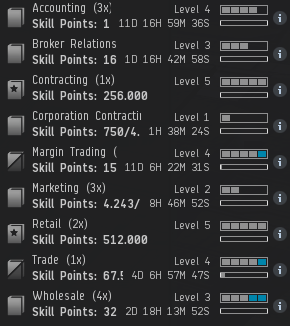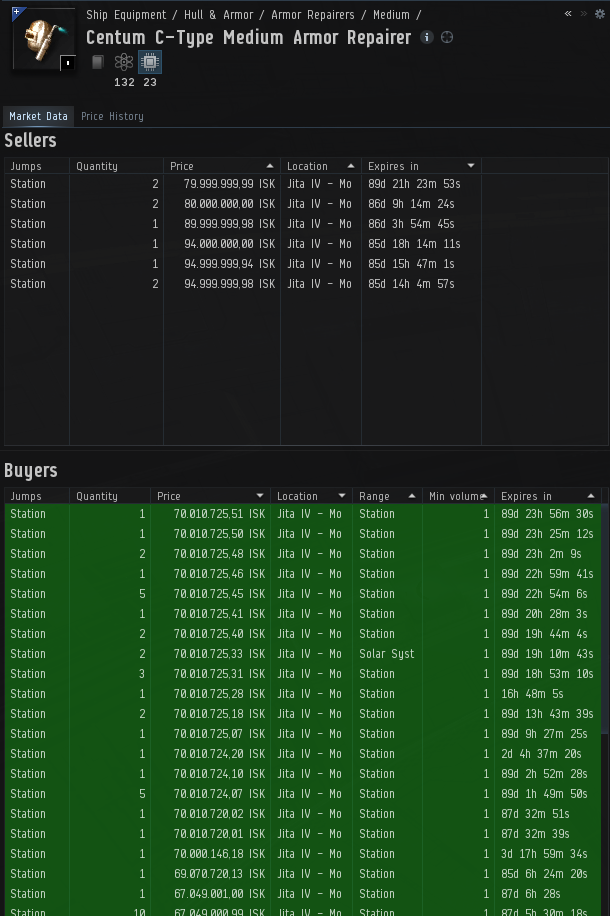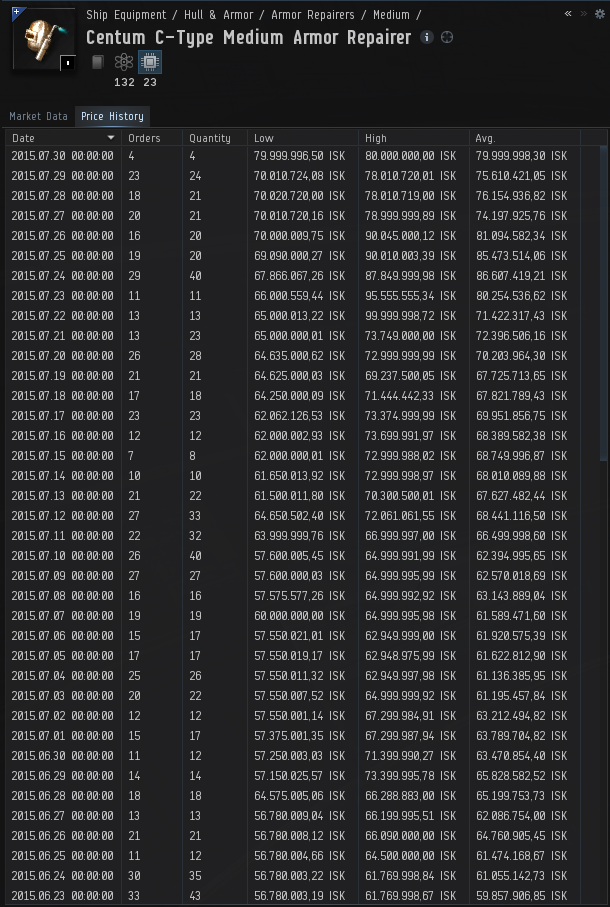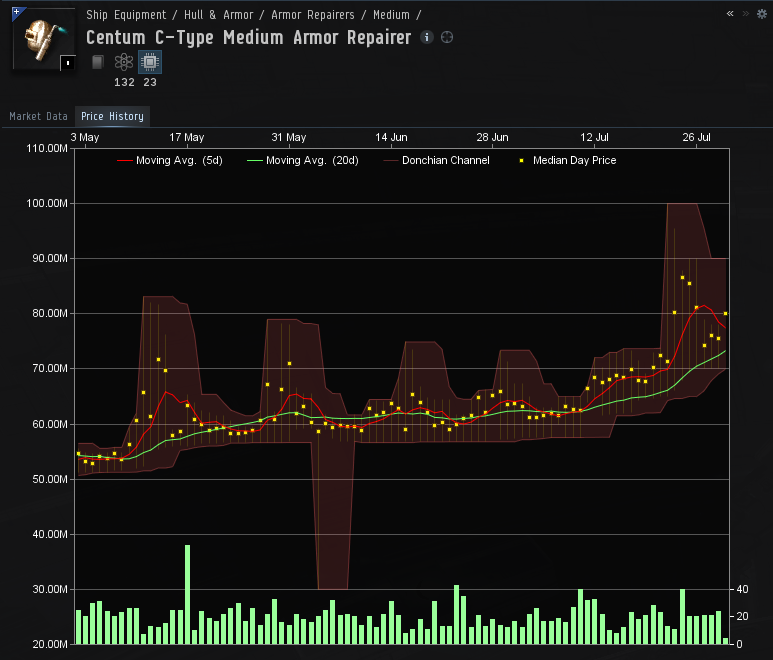Table of Contents
Station Trading: Getting Started
Please contact the active author before you make any significant changes. ;#;
How do you make a lot of ISK with minimal effort? The name of the game is station trading. It's not the most exciting part of EVE Online, however if you need to (for example) fund your game time with ISK, station trading is a perfect solution. It requires very limited skills, limited time investment, limited ISK investment. Of course, the more you have of each of these, the more profit you will make. However, in order to start off, you only need very little.
Starting Requirements
- A dedicated trade character in one of the trade hubs such as Jita or Amarr
- Some skills
- Broker Relations
- Retail
- Continue training towards
- Margin Trading (requires Accounting to 4)
- Wholesale (requires Marketing to 2 and to 5, which requires Trade to 2)
- Starting cash
- More is better, I'd suggest supporting the initial investments with some exploration or other means. 10 million ISK is possible to start with, 250 million ISK will get you rolling quickly.
Getting Started
With these skills, and even whilst you're still training, you can start investing your money into items.
Go on the market, and browse for items where the;
- Difference between the lowest sell order and the highest buy order is >10% (the margin)
- Trade volume is high, relative to the price of the item and balance this with your investment and # of available orders (price history > table > quantity)
- Average price is in between the low and the high price (price history > table > avg)
- Current price is not inflated (see price history graph or table, have a look at the development in the last 7-30 days)
- There is no extreme amount of competition (check current buy/sell orders, see how many expire in 88-90 days, that's the amount of competitors in the market)
- Amount of sell orders is not a lot higher than the amount of buy orders (the price is set to fall in the future)
Once you've found an item, put up a buy order that's just above the highest buy order available (mark your orders to easily recognize your own, cog in the upper right corner of the market window. Set the amount of items you want to buy to 1.
Now, start searching for more items in order to fill the available orders you have, according to the skills you have trained. Try to invest 75-80% of your starter isk this way, spreading it over your different orders. So, if you start with 100m and you have 20 orders available, spend about 80mil of that on setting up 20 different orders worth 1-8mil each (buy only 1 item at the time). In order to easily check and update your orders, drag all the items you've invested in to the quickbar (next to the browse tab, upper left corner of the market screen).
Now you're set and you can start updating your orders. To keep some sanity and not burn out, don't update your orders 15 times a day, but schedule moments where you can spend 5-20 minutes (depending on the amount of orders you have out) to make sure your buy orders are the highest available. However, the more time you spend, the more profit you'll make.
Once a buy order is filled, you'll see the item in your inventory, put it up for sale right away and set the price just below the current lowest sell order. Once this sells, you've made your first profit.
Example
Let's look at the Centum C-Type Medium Armor Repairer as an example and go by the previously mentioned criteria. At the writing of this guide, this was the market information as available in game;
- Difference between the lowest sell order and the highest buy order is >10% (the margin)
The lowest sell order is about 80 million ISK, whereas the highest buy order is 70 million ISK. Thus, the margin is 12,5% or 10 million ISK. ✔
- Trade volume is high, relative to the price of the item and balance this with your investment and # of available orders (price history > table > quantity)
On a bad day, this item still trades (bought from sell orders AND sold to buy orders combined) quite well, with never really going below 10 a day. On a good day, it may change hands 40 times. For an item of this value, that's good enough. ✔
- Average price is in between the low and the high price (price history > table > avg)\
On every single day in the price history table, the average price is between 'high' and 'low', usually closer to the 'high' price of a sale that was made on that day. This means that it might be tricky to actually fill the buy order, however once that does happen, it's likely to sell. ✔
- Current price is not inflated (see price history graph or table, have a look at the development in the last 7-30 days)
The price seems to gradually increase over time, until the last time period. This item looks to be overpriced at the moment, however the risk of losing money on this trade is still low since the highest buy order value (currently 70 million) was surpassed over two weeks ago in the sell order value. On the short term, this item is profitable. When you don't update your orders regularly though, this might be an item to skip over. ✖
- There is no extreme amount of competition (check current buy/sell orders, see how many expire in 88-90 days, that's the amount of competitors in the market)
You can verify how much competition you have by checking the expiration time on existing buy orders. Orders (almost always) have an expiration time of 90 days, which is refreshed whenever the order is updated. So any order with an expiration time of more than 89 days was updated in the last 24 hours. About 15 other people have updated their buy orders in the last day. This is a relatively high amount of competition, which means that your buy order may be useless within an hour. Unless you update you orders multiple times a day, this is too competitive. ✖
- Amount of sell orders is not a lot higher than the amount of buy orders (the price is set to fall in the future)
Compared to the amount of buy orders, there are very few sell orders. This means that the price is likely to continue rising in the future, especially considering the fact that the average price of the item (in the history table) is mostly closer to 'high' (a sell order) than 'low' (a buy order). Once you manage to fill a buy order, you will not have too much competition. One could even invest in buying up existing sell orders and relisting them for more. ✔
Tips
So how can you quickly turn this into a profitable enterprise?
An example from personal experience
- I took an hour to scout out 40 items, average price of 50-150mil each
- I Invested about 1.5b setting up 5b worth of orders, possible with margin trading skills
- I updated all of them about 5-10 times on the first day, at different hours
- I kept updating them for another day
- I cancelled all the buy orders and only focused on selling
- I made about 900 million ISK in three days
What items did you invest in?
This is the secret of every station trader. With experience and spending time in exploring the market window, you will gain experience and learn how to set up better orders and recognize where to invest in and where not to invest in. If you are skilled in the use of Excel or Google Docs and have some experience in pulling API information from EVE's various online market databases, you can even use spreadsheets or tools to automatically find items that are worth investing in.



